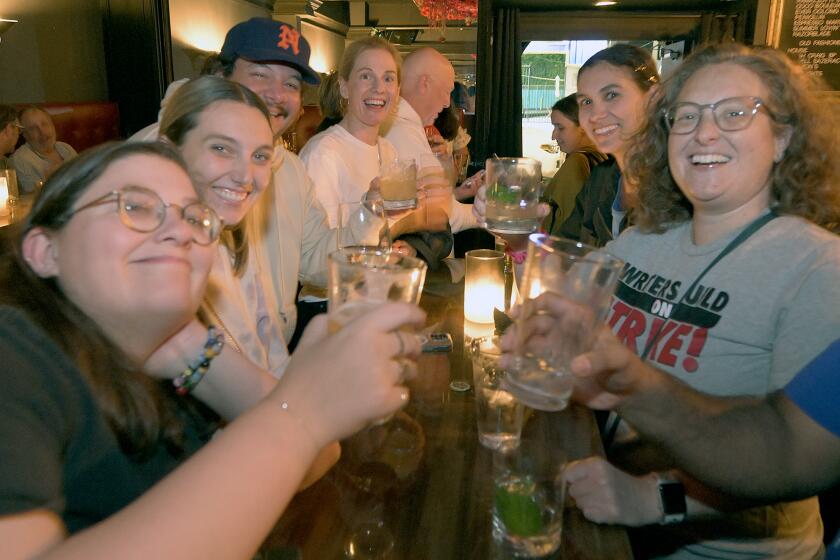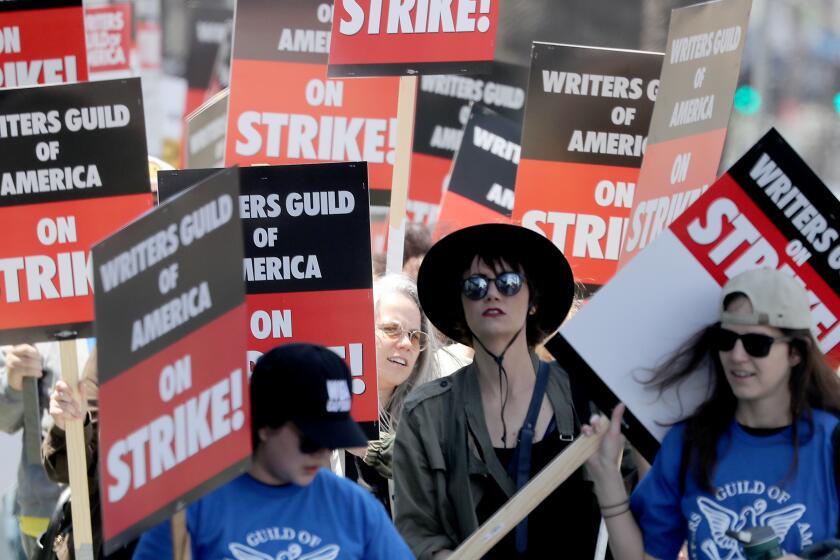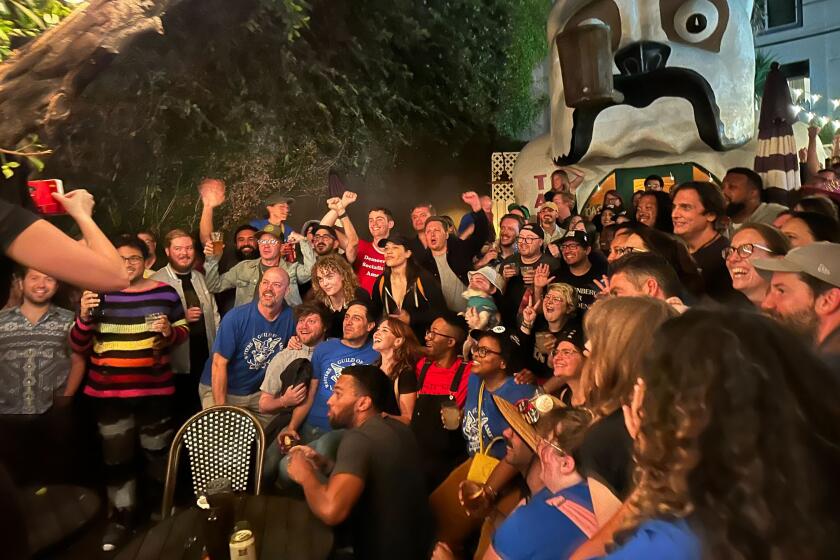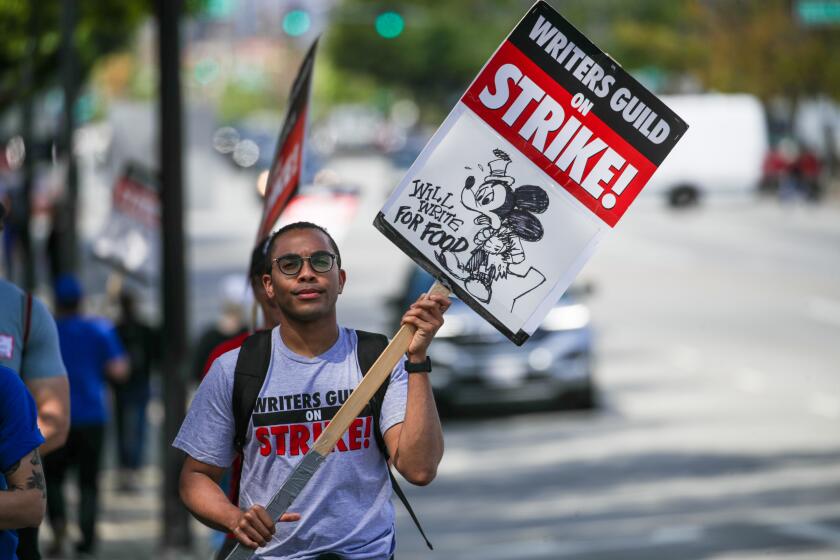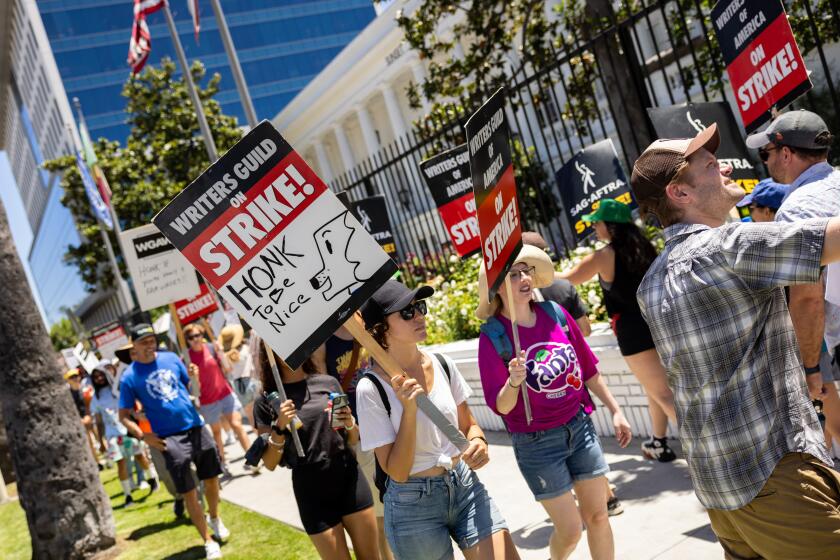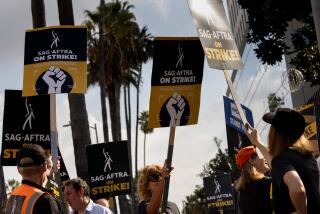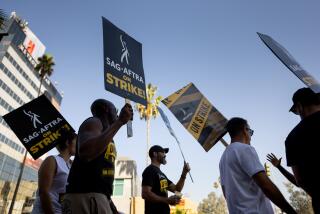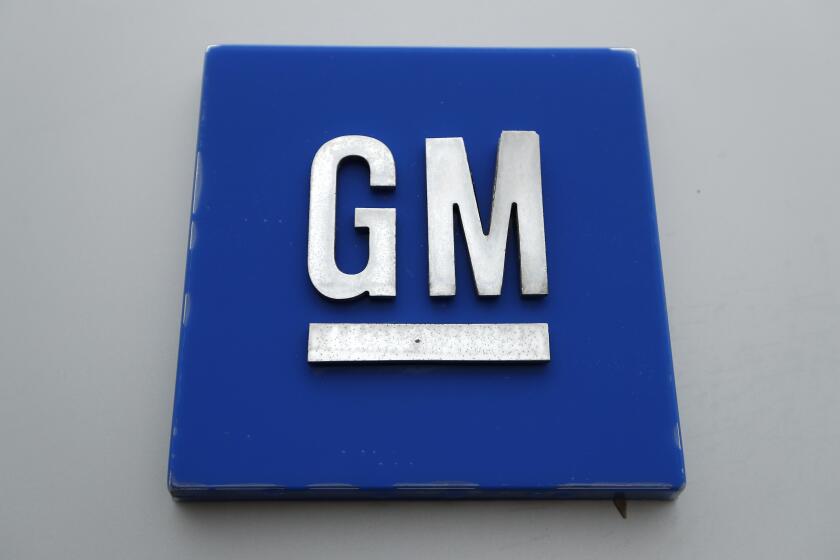WGA and the studios reach tentative deal to end writers’ strike
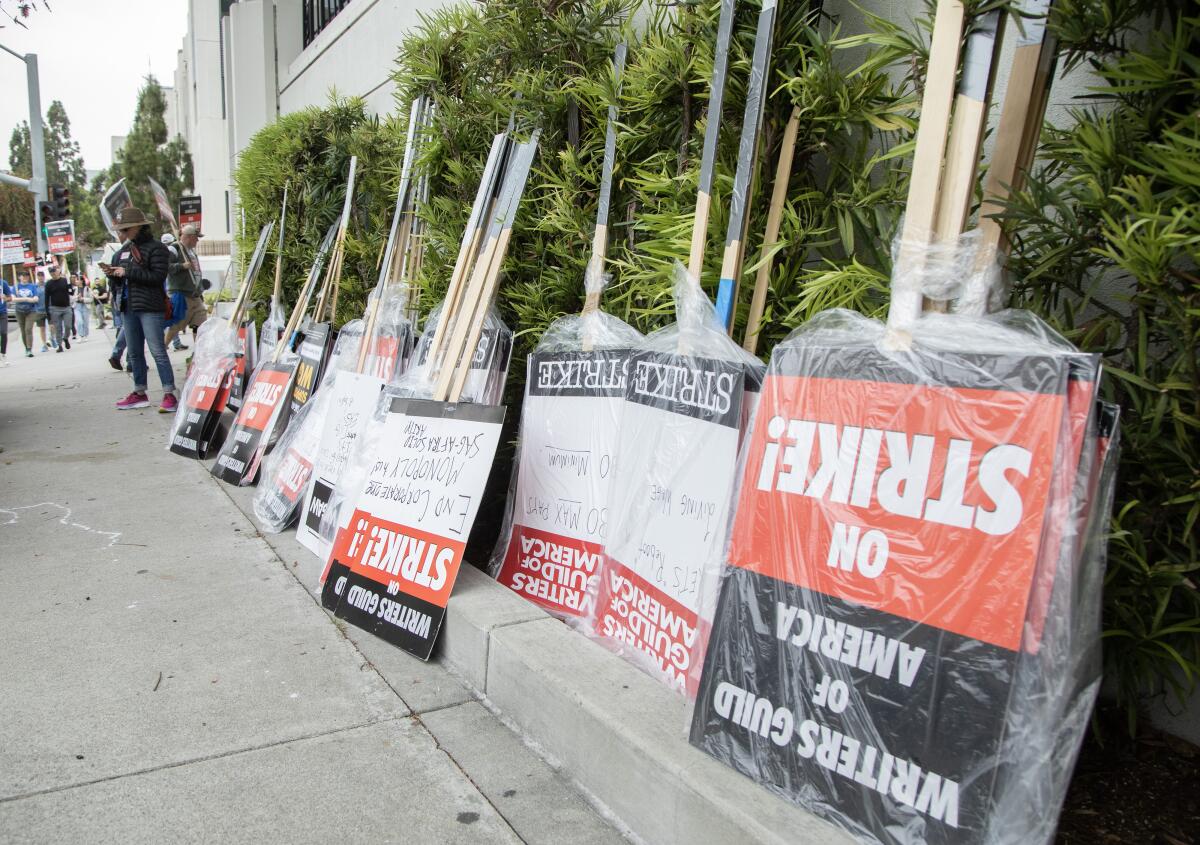
- Share via
The Writers Guild of America and the major Hollywood studios have reached a tentative deal that would end a strike that has lasted 146 days, tossed thousands of people out of work and exposed deep anxiety over changes brought by technology.
The proposed three-year contract, which would still have to be ratified by the union’s 11,500 members, would boost pay rates and residual payments for streaming shows and impose new rules surrounding the use of artificial intelligence.
“We can say, with great pride, that this deal is exceptional — with meaningful gains and protections for writers in every sector of the membership,” the WGA negotiating committee said in a Sunday night message to its members.
The writers have been on strike since May 2, seeking protections from the ways in which streaming and other industry shifts have threatened their livelihoods.
Key questions about next steps are answered after the Writers Guild of America strikes a deal with the studios.
With the tentative pact with the WGA done, entertainment company leaders are expected to turn their attention to the 160,000-member performers union, SAG-AFTRA, to accelerate those stalled talks in an effort to get the industry back to work. Actors have been on strike since mid-July.
The WGA leaders, in their Sunday message to members, said guild staff will now comb through the contract to make sure that “the last ‘i’ is dotted.”
The negotiating committee will vote on whether to recommend the contract and send it on to the WGA West board and WGA East council for approval. Those leadership votes are expected to take place Tuesday.
Writers were told not to return to work until the guild authorizes them to do so, but picketing will be suspended.
WGA members declared victory on social media. “We held strong together as one union to demand our fair share,” former WGA West board member David Slack wrote on X, formerly known as Twitter. “And that’s why we won.”
The twin strikes have taken a heavy toll on crew members who made financial sacrifices in a historic show of solidarity. Small businesses that depend on the entertainment industry also suffered.
The writers’ strike was, in many ways, a response to the tectonic changes wrought by streaming. Shorter seasons for streaming shows and fewer writers being hired have cut into guild members’ pay and job stability, making it harder to earn a sustainable living in the expensive media hubs of Los Angeles and New York, guild members have said.
The studios came into negotiations with their own set of challenges.
The pay-TV business is in decline because of cable cord-cutting and falling TV ratings, which have eroded vital sources of revenue. At the same time, the traditional companies have spent massively to launch robust streaming services to compete with Netflix, losing billions of dollars in the process.
The 2023 writers’ strike is over after the Writers Guild of America and the Alliance of Motion Picture and Television Producers reached a deal.
The Alliance of Motion Picture and Television Producers represents a diverse set of companies. Its members include entertainment-only companies such as Netflix; traditional studios including Warner Bros. Discovery and Walt Disney Co.; and tech behemoths like Apple and Amazon.
The strike was one of Hollywood’s longest. After long lulls, talks accelerated in recent days when company chief executives came to the bargaining table. The two sides resumed negotiations Wednesday for the first time since Aug. 22.
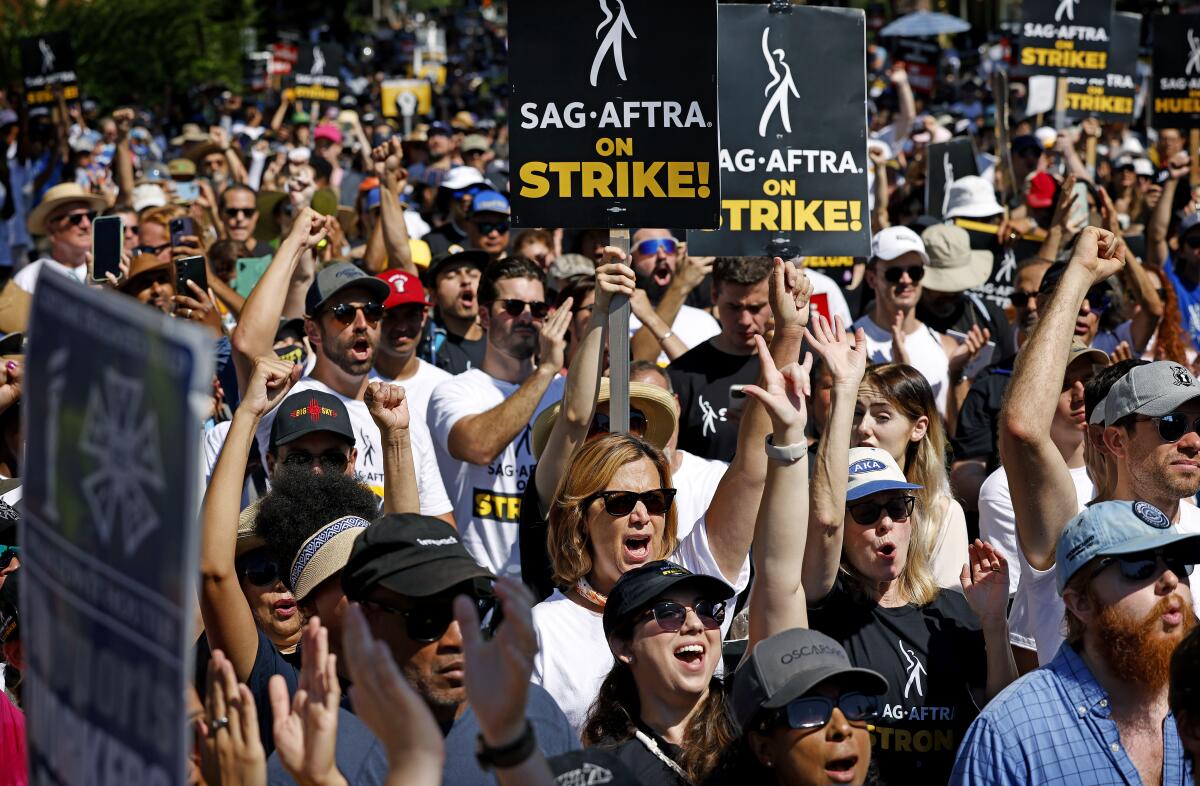
Writers from ‘The Marvelous Mrs. Maisel,’ ‘Primo’ and ‘Abbott Elementary’ react to the tentative deal to end their bitter strike.
The road to an agreement was rocky.
The writers picketed major studios, effectively bringing much of Hollywood’s film and scripted TV production to a halt.
Then, in mid-July, writers were invigorated when actors joined the work stoppages. The surge compounded the economic pain for the industry but also widened the lens on the labor struggle, making it more relevant to everyday Americans.
The dual Hollywood strikes, not seen since 1960, decimated the entertainment industry, further shuttering productions and financially clobbering related businesses, including talent agencies, casting firms, caterers and prop houses.
Studios delayed major film releases, including Warner Bros.’ science fiction epic “Dune: Part Two,” because the strike prevented actors from promoting their movies.
Without popular scripted shows including ABC’s “Abbott Elementary” and CBS’ “Young Sheldon,” networks filled their fall TV schedules with reruns, sports and unscripted programming. Fox aired a game show called “Snake Oil”; CBS reprised “Yellowstone” episodes; and ABC began simulcasting ESPN’s broadcasts of “Monday Night Football.”
Like most WGA members, many Black writers widely support the strike but fear there will be a contraction of projects and opportunities once Hollywood gets back to work.
The entry of the actors into the “hot labor summer” also re-energized the WGA and other unions.
The writers effectively used social media platforms to wage a campaign highlighting the economic disparities between the raises they were asking for and the executive compensation packages of top studio executives.
Corporate titans took the heat. Bob Iger, CEO of Walt Disney Co., incurred a backlash after telling CNBC that the demands of the writers and actors unions were not realistic while he was attending an exclusive investment banker-sponsored retreat for industry luminaries outside Sun Valley, Idaho.
One unnamed studio executive reportedly told Deadline, “The endgame is to allow things to drag on until union members start losing their apartments and losing their houses.”
These statements became rallying cries for WGA members, who enlisted a broad array of support from other Hollywood unions, including the International Alliance of Theatrical Stage Employees and Teamsters.
Frustration, fears about the future and a high degree of mistrust continue to shape the script of Hollywood’s strikes by the WGA and SAG-AFTRA.
After three months of striking, WGA and AMPTP agreed to meet last month, but it didn’t go well.
Netflix co-Chief Executive Ted Sarandos and Sony Pictures Entertainment CEO Tony Vinciquerra were initially among the most active executives to try to facilitate compromises, but they soon were joined by other leaders, including Iger, NBCUniversal Chief Content Officer Donna Langley, CBS Chief Executive George Cheeks and Warner Bros. Discovery Chief Executive David Zaslav.
Talks fell apart after an Aug. 22 meeting with the four leading CEOs — Iger, Zaslav, Langley and Sarandos. Representatives for the writers described it as a “lecture” and a browbeating session in which they were pressured to accept an Aug. 11 proposal from the AMPTP.
After the meeting, the alliance released a summary of its proposal, causing much anger among writers for allegedly trying to go around the WGA’s negotiating committee. The effort deepened the mistrust between the two sides.
For their part, the executives wanted writers and the wider Hollywood community to see the offer on the table, hoping that move would put pressure on the guild to compromise.
The studio’s proposal offered wage increases and signaled a willingness from the alliance to negotiate on topics it previously was unwilling to discuss, such as sharing of viewership data with the WGA and staffing in writers’ rooms.
Streaming has transformed television and led to a surge in content, but it also has squeezed Hollywood writers. Five Writers Guild of America members share their stories.
But the WGA’s negotiating committee felt the proposal did not go far enough. Writers on the picket lines were not impressed, calling the studios’ proposals “half-measures.” They also balked at a proposal to share viewership data on streaming programs with only six WGA staffers — and not with the writers who worked on the shows.
Frustration among workers, including film crew workers, continued to build as the strikes stretched beyond Labor Day, when some had hoped that a deal would be reached.
Some Hollywood workers moved out of state, some lost their homes and others worried about losing their health insurance due to a lack of enough qualifying working hours.
Political leaders including Gov. Gavin Newsom, L.A. Mayor Karen Bass and State Treasurer Fiona Ma also weighed in, urging the parties to settle the dispute.
“This historic strike impacted so many across Los Angeles and across the nation,” Bass said in a statement hailing the deal. “Now, we must focus on getting the entertainment industry, and all the small businesses that depend on it, back on their feet and stronger than ever before.”
SAG-AFTRA has approved a deal from the studios to end its historic strike. The actors were on strike for more than 100 days.
Todd Holmes, associate professor of entertainment media management at Cal State Northridge, estimated that the economic damage of the dual strikes on California is about $5 billion. If the strikes were to go into mid-October, the cost could balloon to at least $6 billion.
For weeks, the two sides presented different timelines and disagreed on whose turn it was to offer a counteroffer. The WGA’s negotiating committee even suggested that some studios might be willing to break from the alliance and negotiate separately with the guild, exploiting potential fractures in the alliance. The AMPTP denied that notion.
Last week, the studio alliance said the WGA had reached out to restart negotiations, signaling a possible thaw was underway.
Studios had their own motivations to get an agreement done by early October. They need to ramp up production soon to salvage the network TV season and their 2024 film slates.
Despite the new agreement, it’s unlikely that production will restart right away.
Scripts will have to be written, and the studios still need to reach a new contract with SAG-AFTRA. SAG-AFTRA and the AMPTP have not held formal talks since the actors’ strike began.
Video game performers also are weighing whether to give SAG-AFTRA negotiators the authorization to call a strike in their negotiations with video game companies.
More to Read
Inside the business of entertainment
The Wide Shot brings you news, analysis and insights on everything from streaming wars to production — and what it all means for the future.
You may occasionally receive promotional content from the Los Angeles Times.
